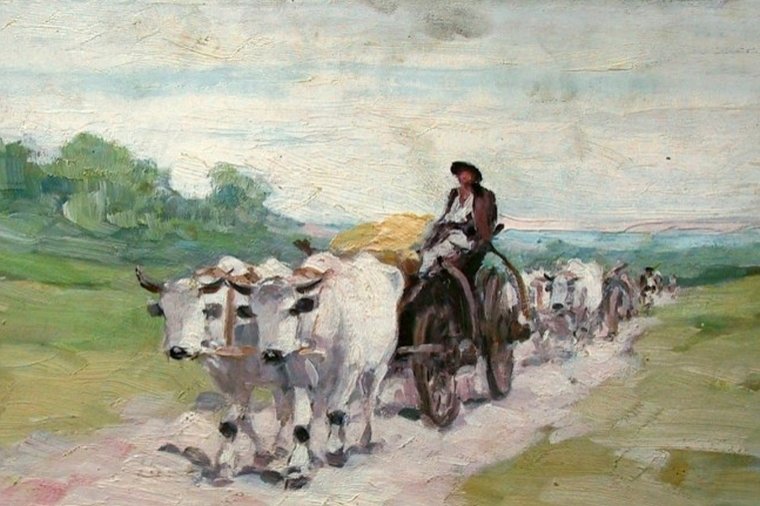|
You
can also view the message online
|
|||||||||||||||||
 Châtenay-Malabry (FR - 92290), June 8, 2020 EFITA newsletter / 935 - European Federation for Information Technology in Agriculture, Food and the Environment The informatique-agricole.org site now offers you the possibility of subscribing the RSS feeds of its two newsletters See RSS feeds to implement to ensure that you continue to receive this newsletter To unsubscribe this newsletter, please contact me directely: guy.waksman(a)laposte.net if this link Unsubscribe does not work. Please note that I changed the presentation of the links that are embedded in the name of the web service. 
To correspond with me (GW), please use this address: guy.waksman(a)laposte.net To subscribe the efita newsletter (please ask your friends and colleagues to test this link) Efita Newsletters subscription Weekly newsletters about ICT in Agriculture in English and French Both newsletters have around 14000 subscribers. >>> Last weekly EFITA Newsletters in English (created in 1999) Efita Newsletters >>> Last weekly AFIA Newsletters in French (created 20 years ago in 1997) Afia Newsletters >>> Statistics about the previous issue of the efita newsletter dated May 25, 2020 >>> Statistics about the afia newsletter dated June 1, 2020 >>> Last issue of the afia newsletter dated June 4, 2020 Good old days (??????): Street in Câmpulung - Theodor Aman - 1875 (1831 - 1891 – Română/ Rumania)
How we saw the future yesterday?
Archives of our newsletters in French and English Voir Afia Voir Efita
Special Issue " Sensors for Autonomous Agricultural Robotics” (Open Access Journal "Sensors" by MDPI) Deadline for manuscript submissions: 1 December 2020 The potential of autonomous field robotics with respect to economic, ecologic as well as social aspects has come into focus. This does not only affect the processes itself—such as weeding or harvesting—but includes the integration into the farm (examples are field logistics or remote service) and the supply chain network. However, the transfer from research to products is hampered by the non-availability of robust sensor solutions. Agricultural machinery do not only navigate (such as in automotive applications), but have to work under complex varying conditions; therefore, sensors for agricultural processing, safety issues, and navigation are innovation drivers for autonomy. Thus, this Special Issue is aimed to the research and technology transfer of intelligent sensors for autonomous agricultural robotics. - sensor and multisensor systems for processing, navigation, and safety - computer vision, machine learning, and artificial intelligence - robustness of sensors and algorithms - low-cost sensor solutions - development and simulation methods (such as digital twins, test stands, and reference environments) - certification, standardization, and measurement methodologies - applications in agriculture contexts such as crop production, livestock farming, horticulture, or forestry Sensors is a leading journal devoted to fast publication of the latest achievements of technological developments and scientific research in the huge area of physical, chemical and biochemical sensors, including remote sensing and sensor networks. Both experimental and theoretical papers are published, including all aspects of sensor design, technology, proof of concept and application. Sensors organizes Special Issues devoted to specific sensing areas and applications each year. See mdpi.com Contact: Prof. Dr. Arno Ruckelshausen Hochschule Osnabrück / University of Applied Sciences Osnabrueck Fakultät Ingenieurwissenschaften und Informatik / Faculty of Engineering and Computer Science E-mail: a.ruckelshausen(a)hs-osnabrueck.de FIRA. International Forum of Agricultural Robotics 8 - 10 December - Virtual event See fira-agtech.com Good old days (??????): Ciobănaș cu câine și turmă – Nicolae Grigorescu (1838 – 1907 - Română/ Rumania) Market insight into moisture meters and a glimpse of the future As risk of drought increases in many parts of the planet, farmers are turning to irrigation to ensure an adequate harvest, but they need to minimise costs. We took a close look at the newest soil moisture sensors, what they cost and where the technology is headed in the years to come. See futurefarming.com Get valuable tips for investing in soil moisture sensors See futurefarming.com Canadians looking for more home-grown tech solutions Criticisms regarding the practicality of adopting automation technology are being raised. See futurefarming.com
XAG rice seeding drone to mitigate labour shortage Drone manufacturer XAG is scaling up drone applications in China that enable night-time seeding at peak period. See futurefarming.comv ATLAS Horizon 2020 looking for agtech projects to fund The ATLAS Horizon 2020 project will fund 5 to 10 business entities by allocating € 1,050,000. See futurefarming.com Report: Taiwan prime target for agtech exporters Taiwan could be a prime target for Queensland agtech exporters See futurefarming.com Installing drainage systems yourself with Soil-Max As agricultural technology continues to advance, we also continue to be reminded of the importance of well-drained soils. See futurefarming.com
Good old days (??????): Prichindeii, Stefan Luchian (1868 – 1916 - Română/ Roumanie)
Compact2025 - end hunger and undernutrition See compact2025.org Compact2025 - Knowledge & Innovation Hub resources page See compact2025.org How Fostering Empathy for the People Who Feed Us Could Change Our Food System Experts weigh in on how we can best support food and agriculture workers during the pandemic—and beyond. See civileats.comv Good old days (?????): Camille Pissarro - Cows Drinking in a Stream, Osny [1886]
Why is no one talking about agriculture as a solution to climate change? While conventional farming practices disturb soil and release carbon into the atmosphere, contributing to climate change, some relatively simple changes to the way we grow food have shown promise in turning some of the world’s farmland into carbon sinks. Studies have projected that better land management practices could increase the amount of carbon stored in croplands by 1.89 billion tons annually, which may be conservative, and that farmland and rangelands could sequester over 600 billion tons from the atmosphere. The good news is, simple practices, such as no-till farming, crop rotation, crop diversity and rotational grazing, are relatively easy to put in place, and have the added benefit of leading to more nutritious and abundant food, and more resilient ecosystems. See agfundernews.com
Old lonely man (and old joke too!) A senior citizen said to his eighty-year old buddy, 'So I hear you're getting married?' 'Yep!' 'Do I know her?' 'Nope!' 'This woman, is she good looking?' 'Not really.' 'Is she a good cook?' 'Naw, she can't cook too well.' 'Does she have lots of money?' 'Nope! Poor as a church mouse...' 'Well, then, is she good in bed?' 'I don't know.' 'Why in the world do you want to marry her then?' 'Because she can still drive!' The distribution of this efita newsletter is sponsored by vitisphere.com Please, contribute to the content of your efita newsletter, and advertise your events, new publications, new products and new project in this newsletter. Without your support, it will not survive! Contact: Guy WAKSMAN E-mail: guy.waksman(a)laposte.net To read this newsletter on our web site See Afia The archives of this newsletter See Afia About the EFITA mailing list You can use the efita moderated list (> 15000 subscribers) to announce any event / product / web site / joke (!) related to IT in agriculture, environment, food industry and rural areas. If you want to subscribe a friend, please fill in his form. If you do not wish to receive our messages, please fill in the following form... |







